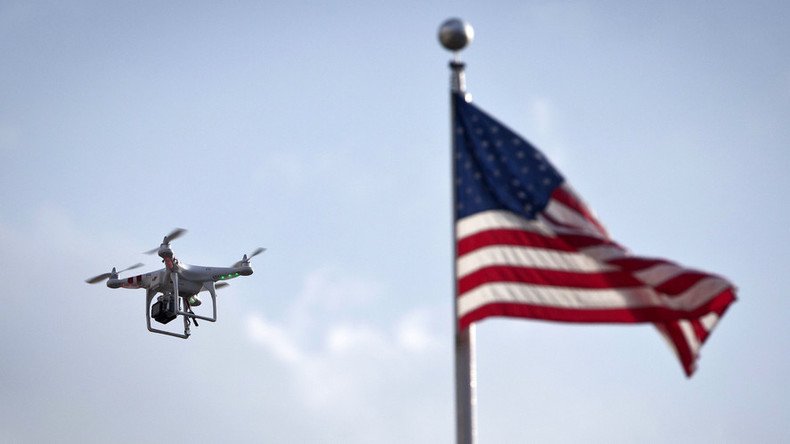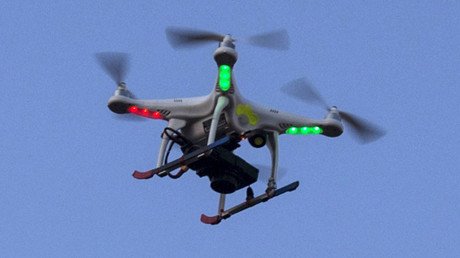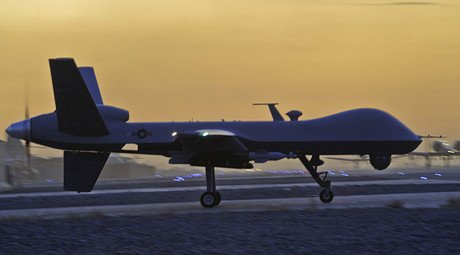Small drone registry introduced by FAA, previous owners have 2 months to file

Owners of small hobby drones must register their unmanned aerial vehicles with the US government beginning December 21, the FAA has announced. Registration will be $5, and previous drone owners have until February 19 before facing penalties.
The Federal Aviation Administration's statutory drone registration process applies to UAVs weighting anywhere from 0.55 pounds to 55 pounds, including payloads such as on-board cameras, the agency announced Monday. Registration through the FAA's website, or by paper, is required of any owner at least 13 years old. Parents or guardians are responsible for registering drones for anyone younger than 13.
"Failure to register an aircraft can result in civil penalties up to $27,500," the rule states. "Criminal penalties for failure to register can include fines of up to $250,000."
Registration requires a name, home address, and email address, the FAA said. Registrants will receive a Certificate of Aircraft Registration/Proof of Ownership that will include an identification number that an owner must mark on an UAV. The identification number can be used for all of an owner's model unmanned aerial systems, the FAA said, adding that registration is valid for three years.
FAA drone rules: names, home addresses & email addresses must be submitted; $5 reg fee. pic.twitter.com/2syWOjQThn
— scott budman (@scottbudman) December 14, 2015"Aircraft registration is necessary to ensure personal accountability among all users of the [national airspace]," the FAA said in the full rule document. "With the current unprecedented proliferation of new sUAS (small Unmanned Aerial System), registration allows the FAA a direct and immediate opportunity to educate sUAS owners. Aircraft registration also allows the FAA and law enforcement agencies to address non-compliance by providing the means by which to identify an aircraft’s owner and operator."
Don’t mess with Santa’s flight path, fly your drone responsibly. https://t.co/9ckWcvcvzk#FlySafe#dronespic.twitter.com/qgYuENb7st
— The FAA (@FAANews) December 14, 2015The guidelines only pertain to hobbyist, model drones, not commercial drones, which must receive an exemption from the FAA. Rules opening up US skies to commercial drones are expected by mid-2016. More than 600,000 small drones used for commercial purposes will be sold in 2016, the FAA estimated.
Drone sightings by aircraft pilots more than double since 2014 – FAA http://t.co/wns5ZB1YRapic.twitter.com/p3tYHzFKX3
— RT (@RT_com) August 14, 2015The rules come just in time for the holiday season. The FAA estimates that 1.6 million small drones intended to be model drones will be sold by the end of 2015, with about half of those purchased in the fourth quarter of the year.
“We expect hundreds of thousands of model unmanned aircraft will be purchased this holiday season,” said FAA Administrator Michael Huerta. “Registration gives us the opportunity to educate these new airspace users before they fly so they know the airspace rules and understand they are accountable to the public for flying responsibly.”
The FAA said the cost of the drone registration system will hit $56 million through 2020.
Safety was cited as a top reason for the registration push. The FAA believes that 200,000 small drones flew in US airspace in 2014. During that year, "the FAA received 238 reports of potentially unsafe UAS operations," the agency said Monday.
Days before the FAA announced the new guidelines, the Center for the Study of the Drone at Bard College in New York released a report detailing the risks that await national airspace littered with UAVs.
The study found that more than 35 percent of 921 incidents between drones and manned aircraft that occurred between December 2013 and September 2015 posed a proximity danger, defined as when a drone comes close enough to a plane or helicopter to be deemed by the FAA as a "near midair collision," or when a pilot believes a drone is too close or dangerous. Of those "Close Encounter" incidents, as the study calls them, 158 came when a drone was within 200 feet of an aircraft, 51 occurred when the proximity was within 50 feet, and 28 of the incidents caused the pilot to maneuver to miss a UAV.
New York City and Newark, New Jersey were the most common locations for close encounters analyzed by the study. The two cities combined for 86 such incidents.
The FAA bars UAVs from flying within five miles of a US airport without permission from traffic control.
We have analyzed over 900 incidents involving drones in the airspace: here's a comprehensive report of our findings. https://t.co/s0GqgMD9Ec
— Drone Center (@DroneCenter) December 11, 2015The Bard College study offered solutions to close encounter incidents, including geo-fencing software to limit UAV access to forbidden areas, or a "sense and avoid system" that would allow a UAV to detect another aircraft and take action to avoid it.
“Various groups are working to develop reliable sense and avoid systems that can match the detect and avoid capability of a human, and the FAA is working to develop common standards for the technology,” the report said.















